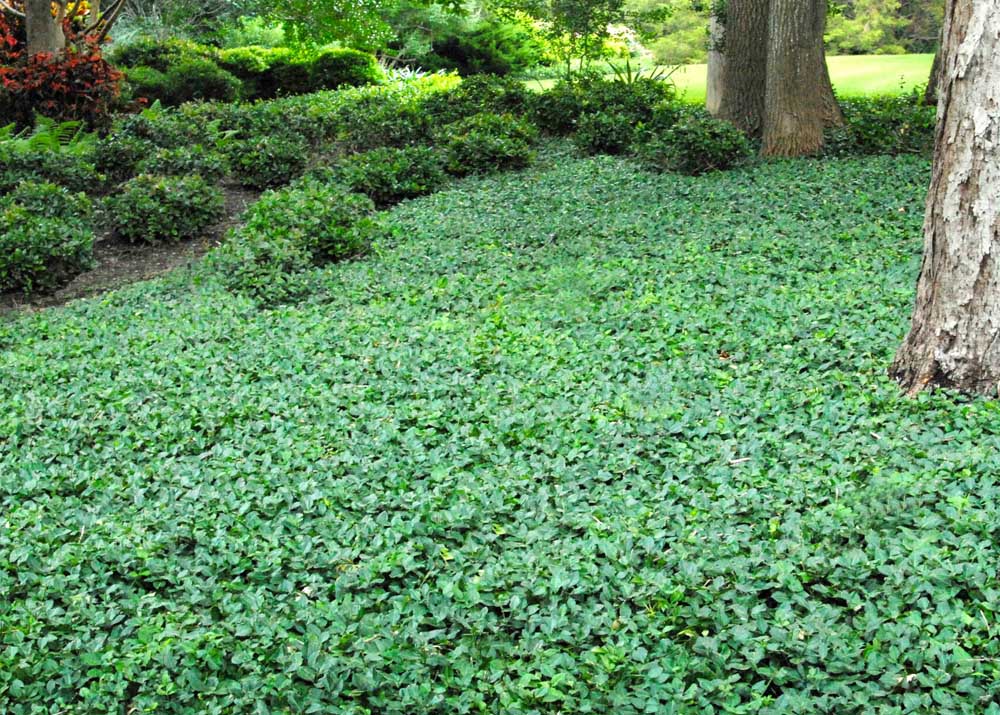What’s that on my Eastern redcedar trees? East Texas expert explains.
Published 5:10 am Sunday, January 5, 2025

- Purple wintercreeper is pictured in the summer. (Contributed Photo)
Dear Neil: My daughter in East Texas has several redcedars in the field next to her house. When we were visiting at Christmas two of them were rusty colored all over. What causes that? They looked normal all summer. She says they do this every year.
They are loaded with pollen. If she were to go out on a dry day and tap one of the bronze branches with a broom handle, she would see clouds of pollen float away. Cone-bearing plants are pollinated by wind (not by bees), and their pollen is lightweight, capable of being carried for many miles. That’s why you hear weather reporters giving data on cedar pollen in winter and early spring as it blows northward from South Texas, the Hill Country, and other parts of Texas where these native junipers predominate. My wife suffers from allergies to their pollen, so we watch the colors of native cedars closely. She uses nasal sprays daily starting in fall to build up her tolerance. Even though we have many redcedars on our own property, the aerosol medication has allowed her to lead a normal life without allergic problems. Anyone with problems should visit an allergist.
Dear Neil: What would be the best groundcover for holding soil on a sunny western slope going down to the city sidewalk? Erosion has been a problem in the past as we tried to get something started.
Let me start with the obvious. Common bermudagrass is always first choice. You can lay it as sod and have almost instant coverage to hold the soil tightly in place. Lay the sod across the slope rather than up and down so that as rainfall runoff drains rapidly through it, soil won’t be washed from its seams.
If the slope is too extreme for you to mow the grass safely, then you could consider having a retaining wall built to lessen the changes in elevation gradually by stairsteps. That works very well, but if it’s a dramatic difference in height you may want to hire a landscape contractor with experience in building retaining walls successfully. Soil behind the wall will have a great deal of weight capable of exerting a huge amount of pressure. You don’t want it pushing the wall out, either after the first heavy rain or gradually over the years.
And to your real answer, the best full-sun groundcover to hold soil on a slope would be purple wintercreeper euonymus. Buy 1-gallon pots and space them 15 inches apart checkerboard style. Better yet, prepare the soil, then roll out jute landscape netting and plant the wintercreeper though cuts you make to accommodate the plants. Rainfall runoff will run down the fibers of the fabric instead of on the surface of the soil. The netting will decay within a year or two, and the wintercreeper will root through it and into the soil.
Dear Neil: My son attended an Earth Day conference last spring. He was given this tree, but since he lives in an apartment, it came to me to plant. I’ve been growing it in a pot, but I know it needs to be planted into the ground. I need help identifying it so that I’ll know where it should be planted.
I normally don’t do plant IDs here, since they’re usually of interest only to the one person, but yours is of general importance. I get a lot of questions about oak species that are given out in the free-tree plant distributions. This looks like Monterrey oak, also known as Mexican white oak (Quercus polymorpha). It is one of the more common ones to be handed out. It’s resistant to oak wilt, and it’s adapted to a variety of soils. My biggest concern is with its winter hardiness. It was new to the market 35 or 40 years ago, and thousands of people from South and South Central Texas northward lost theirs in that awful cold spell of February 2021. That’s probably why it’s native to Mexico and only to a limited area of deep South Texas.
Dear Neil: The slope in our backyard is so steep that I can see directly into the neighbor’s yard in spite of a 6-foot cedar fence. I currently have Ebbengi elaeagnus, but the long shoots are unsightly. What will grow to 10 feet and handle the sun well? I’ve been looking at Nellie R. Stevens and Needlepoint hollies and Coppertone Bronze loquat.
You’re asking a guy who uses hollies all over his own landscape. Needlepoints won’t grow to be that tall anytime soon, but Nellie R. Stevens hollies are my go-to shrubs for 10- to 12-foot (or taller) screens. Start with plants that are 5 or 6 feet tall (or taller), and space them 8 feet apart, even if they look a little lonely initially. Closer plantings cause the hollies to lose too many lower branches. You could also use tree-form yaupon hollies set into a bed 6 or 7 feet out from your fence. Where they’re adapted, loquats are fine, but there are cold issues and diseases that would score them down a bunch for me. Be careful not to let the hollies dry out for the first couple of years. They don’t wilt conspicuously, so it’s easy for new holly growers to let them get too dry without realizing it. It’s best to water them by hand with a garden hose, soaking their soil deeply and thoroughly on a regular basis.






